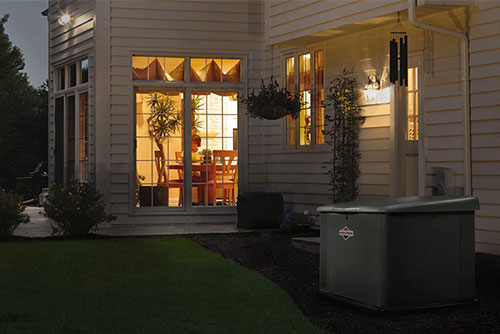Ashland City: 615-792-7136
Hartsville: 615-680-3371
Cookeville: 931-526-9111
 When power outages strike, a standby generator can be a true lifesaver, ensuring that critical electrical systems keep running and maintaining a safe and comfortable home environment.
When power outages strike, a standby generator can be a true lifesaver, ensuring that critical electrical systems keep running and maintaining a safe and comfortable home environment.
But before you can fire up that backup power source, it’s crucial to lay the groundwork—literally—with a gas line that can fuel your generator effectively. Advanced Propane offers expert gas line installation for your standby generator. All our service technicians are fully certified to install any type of gas piping from your outdoor propane tank to your standby generator. At Advanced Propane, we’re also certified to install any gas piping that meets state and local codes, whether it’s flexible or rigid pipes.
In this comprehensive guide aimed at homeowners, we’ll demystify the process of gas line sizing for standby generators, equipping you with the knowledge to ensure your home is powered through any electrical disruptions with ease.
A standby generator is only as good as the fuel that powers it. Gas line sizing directly impacts the efficiency, reliability, and even the safety of your generator’s operation.
Under-sizing a gas line can lead to a lack of fuel supply, causing the generator to run erratically or not at all, while oversizing can actually lead to performance issues due to poor gas velocity. Needless to say, getting the gas line sizing right is an essential step towards a functional and durable standby power system.
Before we plunge into technicalities, let’s establish some gas line fundamentals. The capacity of a gas line is determined by two factors: its internal diameter and the gas pressure. A pressure drop across the gas line is necessary to maintain adequate pressure at the generator’s fuel inlet. Understanding these factors will guide you toward selecting the appropriate line size for your specific generator.
To adequately power a standby generator, the gas line should meet the manufacturer’s criteria for capacity, typically expressed in cubic feet per hour (CFH) or BTUs. It’s not just about getting the right capacity; gas pressure is equally significant. A line that’s too small can cause too much pressure drop and a line that’s too large can result in low pressure at the generator. Ideal pressure ensures the generator operates within safe and efficient parameters.
Generator size and fuel type play major roles in determining the right gas line size. Larger generators require more fuel, thus a larger gas line diameter. Similarly, natural gas and propane will have different size requirements due to their inherent differences in energy density and combustion characteristics.
The size of your generator is the most critical factor in determining the required gas line size. This is generally dictated by the generator’s voltage output and is usually rated in kilowatts (kW). A bigger generator needs a larger pipe to ensure an uninterrupted fuel supply.
None of this should sound as vague as rocket science—actual calculations are fairly straightforward. The actual pipe sizing calculations can be complex, but most generator manufacturers provide clear guidelines and sometimes even online tools to simplify the process.
Calculate the total length of the gas line from the meter to the generator, taking into account any bends or turns, as these add effective length. Use the manufacturer’s gas pipe sizing recommendation as a starting point, but ensure you also consider altitude, pipe material, number of fittings, and pipe condition in your final decision.
Even if you’ve nailed the calculations, poor installation can compromise the gas line’s performance. When installing a gas line for your standby generator, it’s critical to adhere to local building codes, use the right materials, and employ the services of trained and experienced service technicians.
Be prepared for power outages at your Middle Tennessee of Southern Kentucky home with a standby generator. Contact Advanced Propane to handle your generator’s gas line installation.